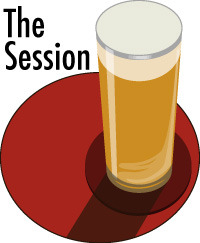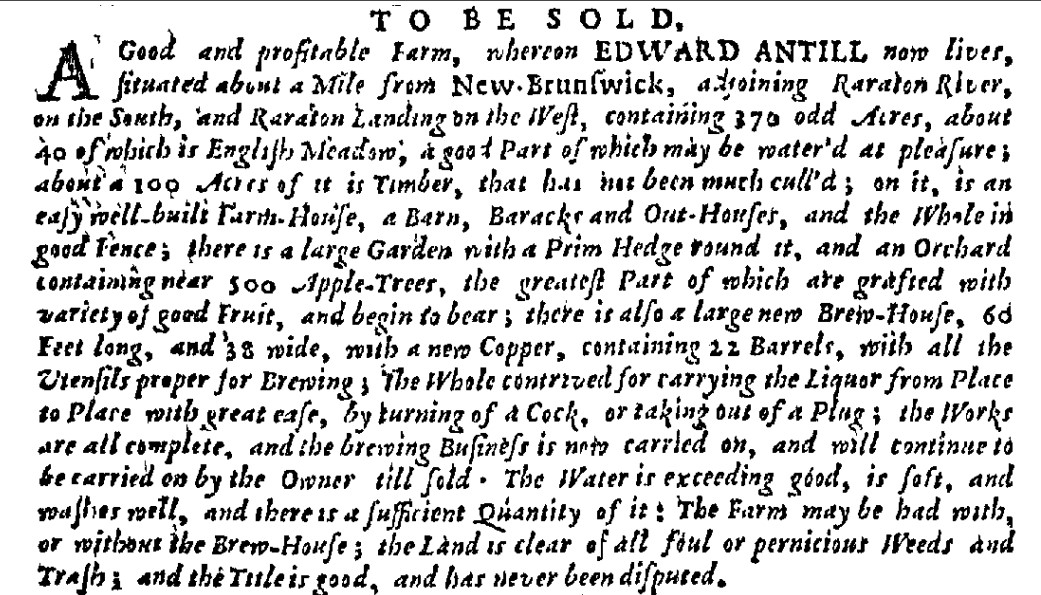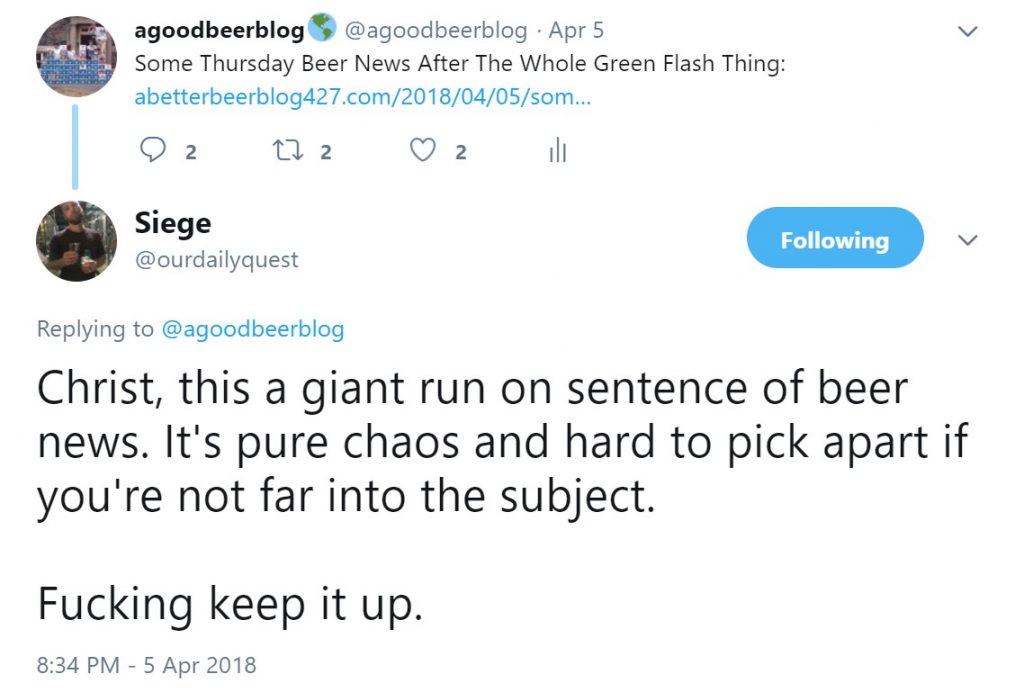Up in the night thinking. So, we had the big court ruling out of the Supreme Court of Canada (SCC) about crossing the provincial border into New Brunswick with beer in your truck and few, clever beer writers and clever political pundits included, seems to have seen the unanimous decision coming. The heart of the decision in R. v. Comeau, by the way, is that the province has the power to provide that all booze in the province needs to be bought from the government agency. Which is what provinces do all the time – make laws for local application within their constitutional jurisdiction under their exercise of the bit of the power of the sovereign Crown assigned to each provincial legislature.
One problem that Canadians have at moments like this is that Canada is actually fairly hard to understand as an entity. The Constitution has something like 137 documents and there are loads of other unwritten rules. And at its heart it is a federation and not a unified state so the local bits called provinces are not subject to national oversight within the area of their local jurisdiction. There are powers and obligations assigned under our constitution to entities like the federal legislature, provincial legislatures, the Crown in other forms like the Governor-General and the courts and also the rights of the individual and indigenous peoples to oppose or be immune from those other parts of society we call government.
I have had a taste of this as I practiced law from 1997 to 2002 in Canada’s tiniest province, Prince Edward Island, where it was a fairly common event to run into any number of ways the odd local rules under which the provincial jurisdiction was exercised. It was like a little constitutional science experiment. And unlike, oh, 100% of beer writers and maybe 99.9999% of political pundits, I also argued a constitutional case there proving, uniquely as far as I know, to the trial level judge that the province had exceeded its rights and offended the constitution by breaching the Charter of Rights and the protected political beliefs of individuals. I was on my feet for two days making my oral argument as I recall. You can find the ruling here. After I left PEI, it was again won on appeal on other grounds and, then, appeal to the SCC was refused.
The point is this. Provinces can pass internal laws that do not line up with the laws of other provinces. They are autonomous from each other except where there is a rule common to all Canadians that the local law offends. Now, PEI was once both hilariously and yet accurately called “too insular to be xenophobic” by the late great Harry Flemming – and this is expressed in all aspects of the law and how the culture responds to the law as an intensely local matter. So, you may have an ailment in PEI that is not covered by the public health system which is regularly provided for in all other provinces. When we lived there at least three men I knew died in the ambulance on route to another province because there was no cardiac surgeon in PEI. And you can find a ruling which can reference the environmental standards that might apply to crop spraying but then find a local aspect wins the day because:
Crop spraying, especially ground spraying, is a common and ordinary activity on farms on Prince Edward Island… The type, severity, and duration of any “interference” was minimal and not what could be described as unreasonable in the context of a P.E.I. farming community.
Similarly, I recall a Crown prosecutor once telling the judge to disregard my submissions as lawyer acting for the defendant because I was relying on court cases from other parts of Canada. As relates to booze, while PEI has a strict liquor control government owned agency, as late as 2004 the culture also included well known illegal taverns. It also even had a famous ban on soft and hard drinks sold in cans that only ended in 2008. I could go on (believe me, I could go on and one) but these are just examples of local nuttinesses which are all allowed within a province because it is a province.
The unhappy response to yesterday’s ruling by the SCC in Comeau appears to be largely based on the idea that somehow individual rights were part of the case. They really weren’t. The Comeau case was about a provincial offense related to bringing beer in to New Brunswick under a provincial law being within the power of that one province. What was questioned was whether a right of all provinces related to free inter-provincial trade was offended. The rights of the individual were not raised. They were only an implication.
They could have been raised. There is a lovely line of Charter cases related to personal autonomy from government impositions starting with the 1997 Godbout case in which the SCC determined that a municipality could not require staff to live in the municipality as that was a decision within “that narrow sphere of personal decision-making deserving of the law’s protection.” My own PEI ruling* referenced that idea in relation to the political beliefs of the individual. Other cases have discussed the concept of individual autonomy protecting the individual against government over reach in other contexts. And the problem for travelling with beer – and perhaps Mr Comeau’s lawyers – is that one of those other contexts considered was recreational marijuana use. Unlike in my case and others where the individual was able to resist the imposition of a restriction on their personal decisions, the SCC stated this in the 2003 ruling in R. v. Clay:
With respect, there is nothing “inherently personal” or “inherently private” about smoking marihuana for recreation. The appellant says that users almost always smoke in the privacy of their homes, but that is a function of lifestyle preference and is not “inherent” in the activity of smoking itself. Indeed, as the appellant together with Malmo-Levine and Caine set out in their Joint Statement of Legislative Facts, cannabis “is used predominantly as a social activity engaged in with friends and partners during evenings, weekends, and other leisure time” (para. 18). The trial judge was impressed by the view expressed by the defence expert, Dr. J. P. Morgan, that marihuana is largely used for occasional recreation. Reference might also be made on this point to a case under the European Convention on Human Rights decided recently by the English courts under the Human Rights Act 1998 (U.K.). In R. v. Morgan, [2002] E.W.J. No. 1244 (QL), [2002] EWCA Crim 721, the English Court of Criminal Appeal observed, at para. 11, that:
A right to private life did not involve or include a right to self intoxication, nor the right to possession or cultivation of cannabis, whether for personal consumption within one’s home or otherwise.
See also R. v. Ham, [2002] E.W.J. No. 2551 (QL), [2002] EWCA Crim 1353. Recreational smoking is not on a par with other activities that have been held to go to the heart of an individual’s private existence.
I wrote about this ruling at the time stating:
This is a bit weird. If we are autonomous from the state, can’t we choose to be slackers? Are we not allowed to dedicate the core of our lives to the life of choice, even if the choice made is not the profound? If we are not granted each our own choice, we are not then each so much uniquely individual but individual as measured against some idealized standard of generic individuality. I bet if we looked into the brain of the judges the ideal standard might look a lot like the life they chose for themselves. Oddly, in many other areas of constitutional law, the individual is allowed to define him or herself – it is a subjective right. It looks like the subjective right to be slack is not good enough.
The law of marijuana use has clearly shifted since then as might have the right to be a slacker. But would the same 2003 rule in Clay apply if a Canadian sought to prove to the courts that his or her “narrow sphere of personal decision-making deserving of the law’s protection” should include the right to cross a provincial boundary to buy cheaper beer? Dunno. I do know, however, that this is not how the Comeau case defense was framed. It was not about Mr. Comeau about the individual. It was about Mr. Comeau as an example, an incident of a bigger thing, the trade in beer.
What is the take away? No where in any of this has any province barred the export of its beer to another province. As we know from our studies of Ontario’s brewing history especially in relation to the regulation of brewing during the deepest temperance years of 1916 to 1927, the making and shipping our of beer is not something provincial governments concern themselves with. The ban in about bringing it in, not sending it out.** So any province can make a local rule allowing beer from elsewhere in. And, in fact, it is allowed already… to a degree. The Liquor Control Act of PEI, for example, states this at section 33(2):
(1) No person shall have in his possession or keeping within the province any liquor that has not been purchased from a vendor under this Act.
(2) This section does not apply…
(b.1) to the keeping or having by persons of or over the age of nineteen years of liquor imported for personal consumption, not exceeding 3 litres of spirits, 9 litres of wine or 24.6 litres of beer per person;
So, there in Canada’s littlest province, the law actually allows you to have can have some imported booze. Just not an unlimited amount. Because that is the rule that is set by their statute passed by the legislature voted upon by the folk elected by the people. Democracy. If you want a law like that in your province, elect the people who promise to pass one. That’s it. Not a constitutional issue. Just one of the local law in each province. Take up your fight there.
*See para 65 of the Condon case – yes, my own Penge Bungalow Murders.
**Although wee PEI only allows export by brewers under provincial permit according to s.91(5) of the Liquor Control Regulations.
 For this month’s edition of The Session, Alistair Reece of Fuggled has answered the emergency alarm as Boak and Bailey have put it so well:
For this month’s edition of The Session, Alistair Reece of Fuggled has answered the emergency alarm as Boak and Bailey have put it so well:







